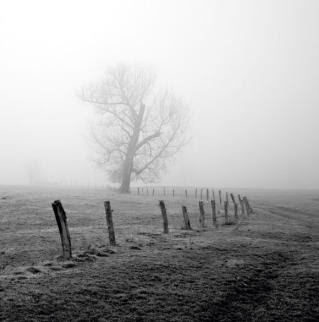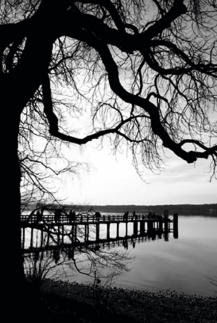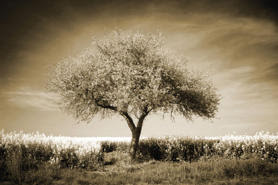In-camera exposure aids
LCD screens are not the most accurate way to judge your exposure, as they’re small and can be affected by the conditions you are viewing the screen in.Two useful tools for the digital landscape photographer are the histogram and the highlight warning. Both are available on most cameras as display options when reviewing the images you’ve just taken.
The Histogram displays the image as a graphical scale. The precise spread of tones will depend on the subject, but if the peak is bunched over to one end of the scale or the other, your picture is likely to be under or overexposed.
The Highlight Warning setting blinks to show areas of overexposure. If important areas of the scene are blinking, decrease your exposure.
Many cameras can also reduce image contrast via the set-up menu. This feature called Tone Compensation can be useful in high or low-contrast lighting situations.
Composition
 While good exposure is a technical requirement that’s necessary for a good image, composition is a more subjective practice. Ultimately your aim is to produce something that you enjoy and that hopefully others will too.
While good exposure is a technical requirement that’s necessary for a good image, composition is a more subjective practice. Ultimately your aim is to produce something that you enjoy and that hopefully others will too.Many of the composition guidelines that apply to colour also apply to black and white – using the rule of thirds, looking for symmetry, natural frames, strong diagonal lines and so forth – but there’s a greater emphasis on shape, texture, light and the tone of grey that each colour is represented as.
Right: This image uses two classic compositonal devices to good effect: useing an element (the fences) as a line to lead the eye into the shot, and a focal point (the tree) placed one-third of the way into the frame (the 'rule of thirds'). The horizon is also on the lower third
Balance in composition is something that many photographers talk about the relationship
 between different elements within the frame. There is a pleasure in a well-balanced composition that considers the relationship between the elements within an image, how they work with each other and what (if anything) is given more attention. What we allow into a picture makes a huge difference to the way it is viewed, so experiment with different crops, and zoom in (literally or figuratively) on interesting details. Try shooting from low and high viewpoints, and experiment with shooting the same scene with various lenses, to see how this changes the emphasis to different parts of the scene.
between different elements within the frame. There is a pleasure in a well-balanced composition that considers the relationship between the elements within an image, how they work with each other and what (if anything) is given more attention. What we allow into a picture makes a huge difference to the way it is viewed, so experiment with different crops, and zoom in (literally or figuratively) on interesting details. Try shooting from low and high viewpoints, and experiment with shooting the same scene with various lenses, to see how this changes the emphasis to different parts of the scene.Left: Look for natural elements in the scene-such as a tree-to provide a natural frame around the main focal point, in this case the jetty.

Landscapes don’t always have to be about capturing beauty; they can be used to capture a reality, whether a positive or a negative one. It’s hard in this age of environmental issues to step into a landscape without being conscious of the human impact on it. Even the shape and boundaries of the landscape are man-made and these can be included in subtle ways to emphasise our relationship with nature, or composed to exclude certain items, depending on your viewpoint.
Above: Rules are made to be broken. Here the rule of thirds was bypassed in favour of a central. symmetrical subject placement, for a simple but effective result.
related article :


















